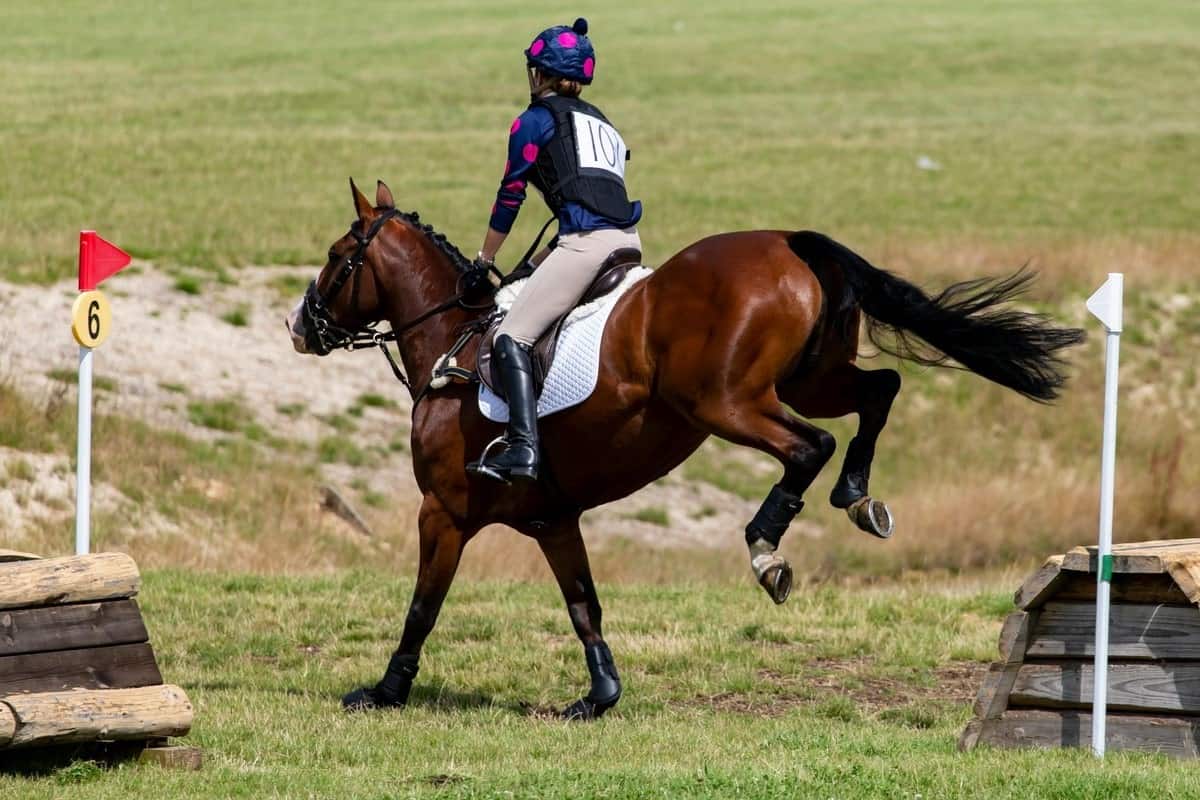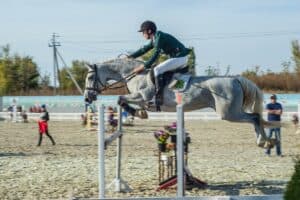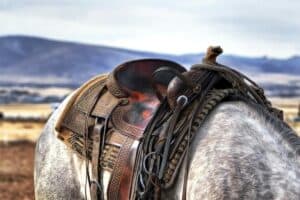Eventing, also known as three days eventing or horse trails, is a competition in which a horse and a rider work as a team and compete with other participants in three horse riding disciplines. Eventing is also known as triathlon of the equestrian world because it comprises of three horse riding disciplines: dressage, cross country and show jumping. It is a complete sport which tests both the rider and the horse in all aspects of horsemanship.
In eventing the horse and its rider must show skills required in three disciplines of horse riding. It tests harmony, balance, and rhythm in dressage; endurance, speed, and bravery in cross country; balance and jumping ability in show jumping.
Eventing Term
The term eventing was previously known as “Combined Training” because it was the collection of three horse riding disciplines. The term combined training is often confused with combined test which is the test of two out of three horse riding disciplines which are included in eventing. Most commonly dressage and show jumping are included in combined test. Nowadays the term eventing is used in place of combined training and combined training is used mostly in place of combined test.
Types of Eventing
Eventing is a competition which may be held as one day eventing or three days eventing.
In one day eventing all three of the riding disciplines are held in one day. Whole in three days eventing, the three horse riding disciplines are held in three days and each day in dedicated for one of the horse-riding disciplines. Three days eventing is now observed as a four day event; two days are dedicated for dressage, one day for cross country and one day for show jumping.
Eventing Phases
Eventing is an equestrian competition which comprises three horse riding disciplines: dressage, cross country and show jumping. Each phase of eventing comprises of one of the three riding disciplines.
Dressage
Dressage is a type of English horse-riding discipline which requires the rider and the horse to perform a series of predetermined movements. It is played in an enclosed arena which has varying dimensions for the type of eventing: 20X60m in three days eventing and 20X40m for one day eventing. Dressage tests balance, rhythm and the cooperation between the rider and the horse. It also acts as the basis for the two other horse-riding disciplines which are tested in eventing because it develops the strength and balance required for show-jumping and cross country.
The judges are strictly observed for their marking to ensure unbiased marking toward the participants. Judges observe the steps of the participants very carefully to detect even the slightest steps of the participants. The participants are not scored in comparison with each other, but they are scored on a scale of 1 to 10. The best score which a participant can receive is a 10 which is very rare.
Cross Country
In cross country the horse is required to jump over several obstacles within a fixed amount of time. For cross country, the horse and the rider must be brave and there must be a relationship of trust and obedience between the rider and the horse. Cross country is a test of endurance of the horse as well as the rider. It is designed to stimulate the experience of riding a horse in the countryside. Even the obstacles placed in the cross-country arena are typically the objects which may be seen in the countryside. These obstacles are designed to be solid, but safety precautions are taken while making such obstacles so that the obstacles may not bring any harm to the horse or its rider in case of a collision. Failure to pass an obstacle during the competition may result in a penalty or disqualification. Speed is also tested in the way that the participant is required to complete the course in a required amount of time. In cross country the participants who has to lowest score win. The score of 0 is the best score a participant can receive.
SHOW JUMPING
Show jumping, also referred to as horse jumping or stadium jumping, is typically the last phase of eventing. This phase of eventing tests the jumping skills along with the physical strength, fitness, and suppleness of the horse as well as the rider. In this phase of eventing, the horse must jump over 10-16 obstacles. The height of the obstacles may vary but are typically around 1.6 meters high. The obstacles are generally made up of materials which can easily be knocked down. Show jumping phase of eventing is timed which means that there is a fixed amount of time to jump over the obstacles. The participant is penalized if the participant takes more time than the fixed amount of time. The participant may also receive a penalty if any obstacle is knocked down, the horse disobeys the rider or the horse goes off track.
Eventing Competition
The first eventing competition was held in France in 1902, which resembles with the current three days eventing. The sport was most popular in Britain in its early days. Eventing was introduced for the first time in the Olympics games in 1912 which were held in Stockholm, Sweden. Since then eventing has been a parts of every Olympic game held.
Eventing competitions are held at national and international levels. The FEI (International Federal for Equestrian Sports) is responsible for the international events of eventing. CCI (Concours Complete International) is the rating system for eventing competitions given by the international governing body for the sports, the FEI.
Horses for Eventing
Any breed of horse can do eventing at lower levels it the horse has the required skills. But for professional eventing, there are certain horse breeds which are favored by the experts. Thoroughbreds are currently used by the professionals the most due to their stamina and strength. Warmblood is also used by some professionals for eventing competitions.
In general, larger horses are preferred although small horses can also excel in some cases. The horse must be strong, fast, brave and most importantly it must be obedient to the rider otherwise it may take a wrong step and fall, causing harm.
Conclusion
We’ve learned that eventing is more than simply a sport as we’ve been piecing together “Eventing Elegance Unveiled: A Symphony of Skill,” which is a compelling performance driven by the partnership between horse and rider.
Every stage adds to the overall harmony, from the show-jumping precision ballet to the bold cross-country energy and the elegant elegance of dressage. The composers are the ones who trained and prepared for this symphony, designing each movement and leap.
Let’s recognize eventing as an art form as we leave the arena, where a horse and rider create a work of art with every step. Their relationship, which is based on communication and trust, goes beyond conventional rivalry. The symphony of eventing allows all riders, experienced or novice, to experience an enthralling show where the music is carried by the wind and the language is written in hoof as riders and horses dance in perfect unison.



